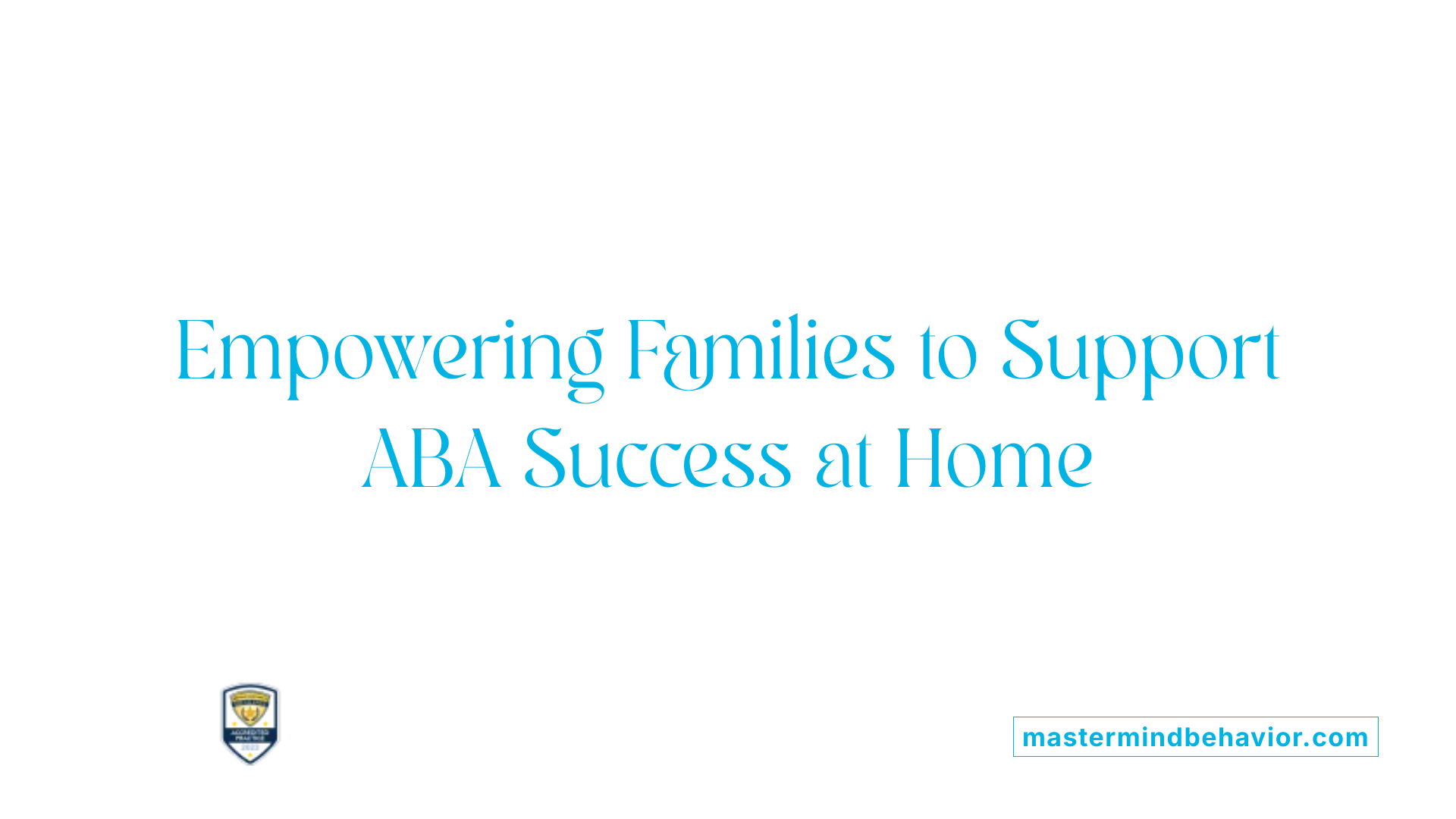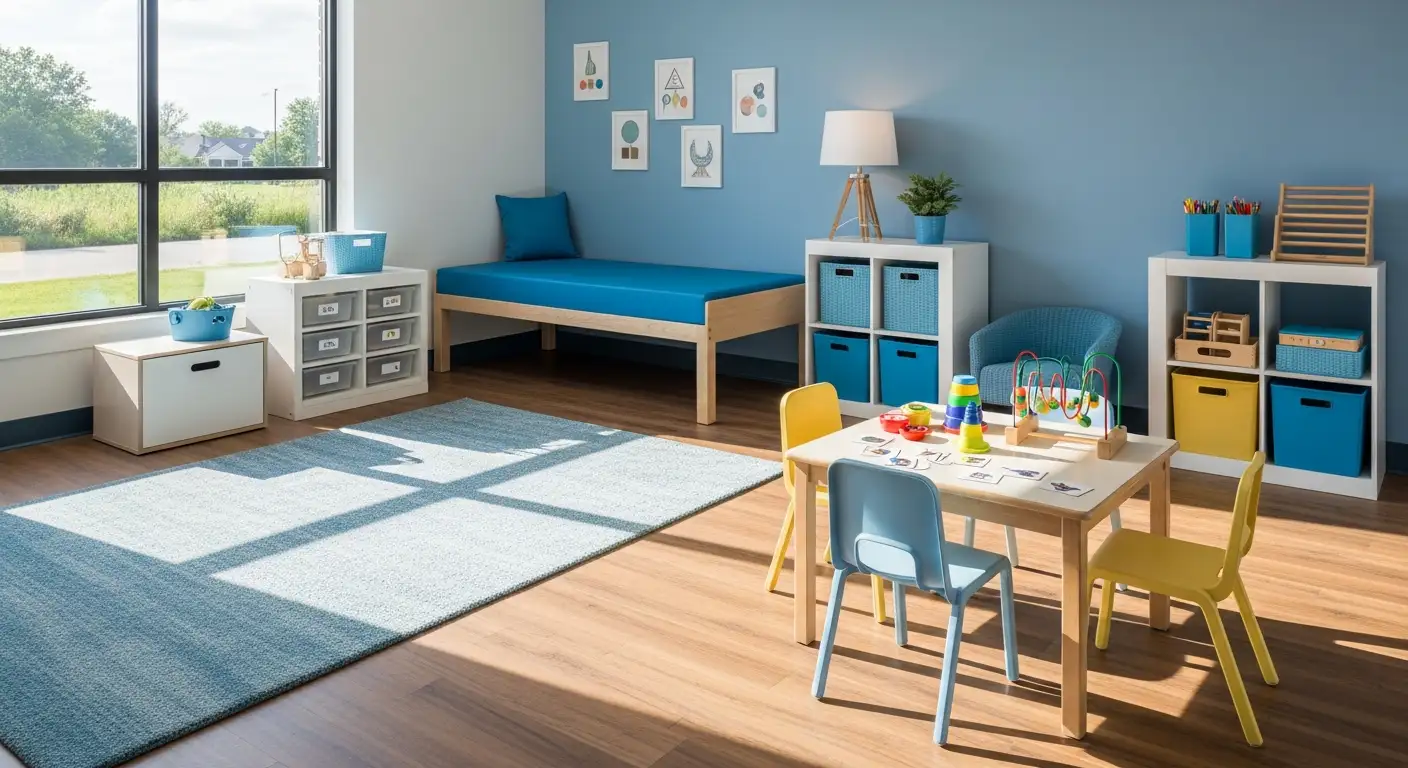How ABA Therapy Supports Healthy Daily Transitions At Home

Understanding ABA Therapy and Its Role in Daily Life
Applied Behavior Analysis (ABA) therapy is a well-established, science-based approach designed to support children with autism spectrum disorder (ASD). By focusing on modifying behaviors through reinforcement and structured interventions, ABA helps children develop crucial communication, social, and daily living skills. This therapy not only targets learning new skills but also ensures these are maintained and generalized across various environments, including the home. A key area where ABA therapy proves invaluable is in supporting healthy daily transitions at home—times that can often be challenging for children with autism. This article explores how ABA therapy supports these transitions, enhances skill development, and empowers families to provide consistent support.
What Is ABA Therapy and How Does It Support Children with Autism?
What is Applied Behavior Analysis (ABA) therapy?
Applied Behavior Analysis (ABA) therapy is a scientifically supported treatment designed to help children with Autism Spectrum Disorder (ASD). It focuses on understanding and improving behaviors through learning principles such as reinforcement. The therapy aims to increase positive behaviors like communication and social interactions while reducing behaviors that may hinder learning or daily functioning.
Techniques used in ABA
ABA therapy uses various techniques including positive reinforcement, direct instruction, and natural environment training. Positive reinforcement encourages desired behaviors by rewarding them, while natural environment training helps children apply skills in their everyday settings. Methods like Discrete Trial Training (DTT) and Pivotal Response Treatment (PRT) provide structured and play-based teaching approaches to promote learning.
Individualized treatment plans
An essential part of ABA treatment is the development of personalized plans tailored to each child’s unique strengths, needs, and interests. These plans target specific goals such as communication, self-care, or social skills and are regularly adjusted to reflect progress.
Role of professionals in ABA therapy
ABA therapy is guided by trained specialists called Board Certified Behavior Analysts (BCBAs) who assess the child, design programs, and oversee therapy sessions. They use data-driven methods to track improvements and adjust interventions for the best outcomes.
Overall, ABA therapy supports children with autism by fostering independence, enhancing communication, and helping them navigate social environments effectively.
Benefits of ABA Therapy in Facilitating Smooth Daily Transitions at Home

How does ABA therapy benefit individuals with autism?
ABA therapy offers scientifically supported, personalized treatment designed to foster critical skills in children with autism. By employing methods such as positive reinforcement, direct instruction, and natural environment training, it helps enhance communication, social abilities, and adaptive behaviors. Starting early maximizes developmental gains, allowing children to build strong foundations for lifelong independence.
Skill development in communication and social interaction
Through ABA, children improve both expressive and receptive communication skills, using engaging activities that promote language development. Group-based components support learning social cues, conversation initiation, and peer interactions, helping children build meaningful relationships and participate confidently in social settings.
Behavioral management during transitions
Transitions like starting a new school year or adjusting after breaks can be challenging. ABA strategies provide structured behavior management techniques aimed at reducing anxiety and frustration by teaching emotion regulation and self-control. This support smooths routine changes, preventing disruptive behaviors and supporting emotional well-being.
Generalization of skills across settings
One advantage of ABA therapy is facilitating the transfer of learned skills from therapy into daily life. Children practice applying communication, social, and self-help skills in various environments, ensuring they can adapt to real-world situations beyond the therapy setting.
Impact on daily routines and independence
ABA therapy improves crucial daily living skills, including dressing, hygiene, mealtime routines, and managing transitions between activities. Strengthening these abilities empowers children toward greater self-sufficiency and confidence in their everyday lives at home and in the community.
Typical ABA Therapy Sessions: Structure and Techniques to Improve Transitions
What does a typical ABA therapy session involve?
ABA therapy sessions are tailored one-on-one interactions between the therapist and the child, centered on the child’s unique needs and goals. Sessions usually start with rapport-building activities or preferred play to help the child feel comfortable and engaged.
Session components and methods
The therapist utilizes structured teaching methods like Discrete Trial Training (DTT), where skills are broken down into small, manageable steps to facilitate learning. In addition, Natural Environment Teaching (NET) promotes the generalization of skills by using everyday contexts. These approaches encourage the acquisition of new skills in a clear, measurable manner.
Use of reinforcement and prompting
Throughout the session, positive reinforcement is a core strategy, using rewards tailored to the child’s preferences to encourage desired behaviors. Prompting techniques are employed as needed to guide the child gently towards correct responses, which are then gradually faded to support independence.
Role of data collection
Continuous data collection during sessions helps track progress and identify areas needing adjustment. This evidence-based approach ensures interventions remain effective and aligned with the child's evolving abilities.
Parental involvement in sessions
Parents are actively involved to reinforce learned skills at home, creating consistency across environments. Therapists often share strategies and progress updates with family members to empower them in supporting their child’s growth.
Together, these session components form a consistent, individualized framework designed to improve transitions and foster long-term success for children with autism.
Collaboration and Family Support: Essential Elements for ABA Success at Home

How can families support individuals undergoing ABA therapy?
Family involvement plays a crucial role in the success of ABA therapy for children with autism. Parents and caregivers actively collaborate with therapists, engage in parent training sessions, and learn how to implement ABA techniques effectively at home. This consistent skill reinforcement across environments helps children generalize and retain new abilities.
Maintaining a predictable daily routine and creating a supportive home environment reduces stress and fosters steady progress. Families that participate in goal setting and monitor their child's progress help ensure that therapy is tailored to the child's unique needs and aligns with family values.
Advocacy is also an important aspect. Parents seeking resources and support can overcome challenges such as stress or limited access to services. This advocacy strengthens parental involvement and ultimately enhances therapy outcomes.
Through this collaborative approach, families become empowered partners. Their dedication to nurturing learned behaviors and supporting emotional regulation at home amplifies the benefits of ABA therapy, making it a more effective path toward independence and success for children with autism.
Enhancing Holistic Development Through Integrating ABA with Other Therapies

How Does Occupational Therapy Complement ABA?
Occupational therapy (OT) works hand in hand with Applied Behavior Analysis (ABA) to offer a well-rounded approach for children with autism spectrum disorder (ASD). While ABA focuses on behavior modification and skill acquisition through evidence-based strategies, OT addresses physical and sensory challenges that can affect learning and engagement. This collaboration targets multiple aspects of a child’s development, helping them achieve greater independence and success.
What Areas of Development Are Enhanced?
Integrating ABA with OT allows for comprehensive growth across four main skill areas:
- Physical Skills: OT improves fine and gross motor skills, hand-eye coordination, and body awareness.
- Cognitive Skills: ABA enhances problem-solving, memory, and the ability to follow multi-step instructions.
- Emotional Growth: Children learn emotion regulation, anxiety management, and self-expression techniques.
- Social Skills: Both therapies foster understanding of social cues, communication, conversational skills, and peer interactions.
This holistic impact supports a child’s ability to adapt and thrive in various settings.
How Does This Integration Improve Sensory Processing and Motor Skills?
Children with autism often face sensory processing difficulties such as managing tactile, auditory, and visual inputs. Occupational therapy specializes in sensory modulation and responsiveness and helps children adapt to sensory overload situations. Combined with ABA’s behavioral strategies, children develop better sensory processing and motor control, resulting in enhanced participation in day-to-day activities and learning environments.
In What Ways Are Daily Living Skills and Behavior Better Supported?
Through integrated treatment plans, the combination of ABA and OT improves essential daily living skills:
- Self-care routines including dressing, grooming, and hygiene
- Mealtime habits and sleep routines
- Managing transitions between activities
Moreover, ABA provides structured behavioral management techniques that are especially effective after routine disruptions like summer breaks or when transitioning to new educational settings. This dual approach ensures children build and maintain skills, regulate their emotions successfully, and manage challenging behaviors constructively, leading to improved independence and confidence.
Building Lifelong Skills: Preparing Children for Independence and Social Integration

Development of communication and social skills
Combining ABA therapy with occupational therapy offers a comprehensive approach to boosting communication and social abilities among children with autism. These therapies enhance expressive and non-verbal communication, help children understand social cues, and foster skills like initiating conversations, turn-taking, and sharing. Group ABA sessions further support social engagement and peer relationships, cultivating a foundation for lasting social inclusion.
Managing emotions and self-regulation
Children learn vital emotional regulation through these therapies, which teach recognizing and expressing feelings, handling anxiety and frustration, and practicing self-regulation strategies. Sensory processing improvements—such as better tactile, auditory, and visual responsiveness—also aid in managing sensory overload, contributing to emotional stability.
Behavioral management during routine changes
ABA therapy plays a critical role in managing behaviors, especially amidst schedule changes like summer breaks. Its techniques help address challenging behaviors by reinforcing positive actions and ensuring consistency. This support minimizes stress and behavioral setbacks during transitions.
Transition support to new educational settings and adulthood
Consistent ABA services prepare children for new educational environments by enhancing social, communication, and self-help skills, thereby boosting confidence and adaptability. In the long term, ABA assists in understanding social cues and developing behavioral management necessary for independent adulthood. Tailored interventions based on individual progress guarantee ongoing support aligned with each child's unique needs.
The Vital Role of ABA Therapy in Nurturing Seamless Daily Transitions
ABA therapy serves as a foundational support system for children with autism, especially when navigating the complexities of daily transitions at home. By delivering individualized, evidence-based interventions that promote communication, social engagement, and behavioral regulation, ABA fosters independence and confidence. Its integration with complementary therapies and active family involvement further enhances holistic development, enabling children to adapt successfully to everyday changes. As families and professionals work collaboratively, the consistent application of ABA strategies ensures that transitions—whether between activities or life stages—are met with greater ease and positivity, laying a strong groundwork for lifelong skills and well-being.
References
- Benefits Of Combining ABA And Occupational Therapy For ...
- The Importance of Sticking to Consistent ABA Therapy
- 6 Benefits of ABA Therapy for Children with Autism
- The Role of Caregiver Involvement in ABA Therapy
- Why Family Involvement Enhances ABA Therapy
- Parent Involvement in ABA Therapy
- Applied Behavior Analysis (ABA)
- Applied Behavior Analysis (ABA)
- Applied Behavior Analysis
- Applied Behavior Analysis (ABA)
Recent articles

ABA Therapy For Supporting Flexibility In Changing Schedules
Navigating Change: ABA Therapy as a Lifeline for Flexible Routines

How ABA Therapy Improves Coping During Times Of Transition
Navigating Change with Confidence: The Role of ABA Therapy

How ABA Therapy Improves Morning And Bedtime Routines
Transforming Daily Habits: The Role of ABA Therapy in Structured Routines for Autism

How ABA Therapy Improves Coping With Unstructured Free Time
Enhancing Daily Living: ABA Therapy and Managing Unstructured Time for Children with Autism

How ABA Therapy Supports Children During Community Events
Supporting Autism Spectrum Children Through Applied Behavior Analysis in Social Settings

How ABA Therapy Encourages Social Communication In Teenagers
Unlocking Social Skills Through Applied Behavior Analysis in Adolescents with Autism



